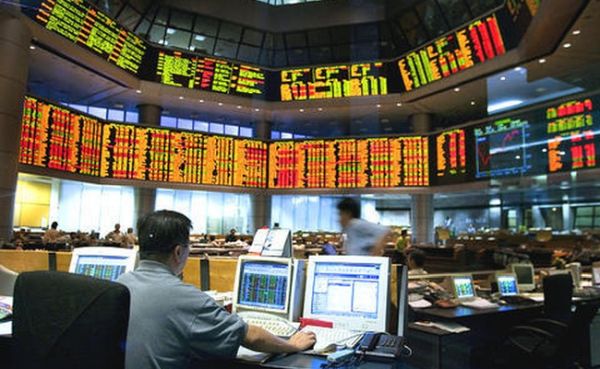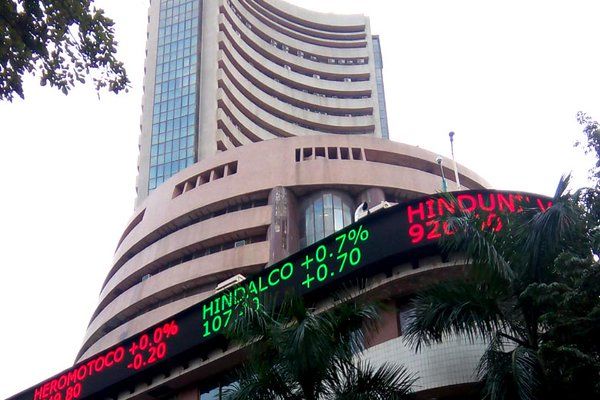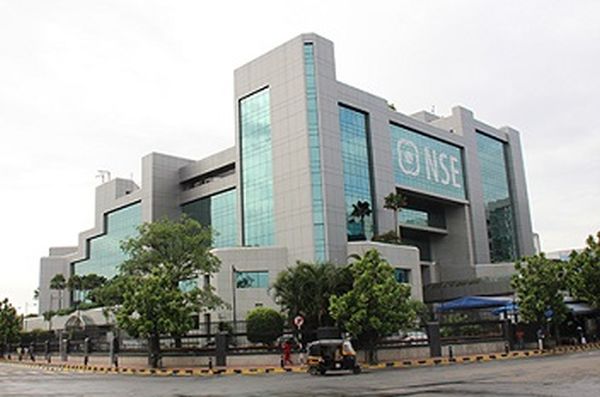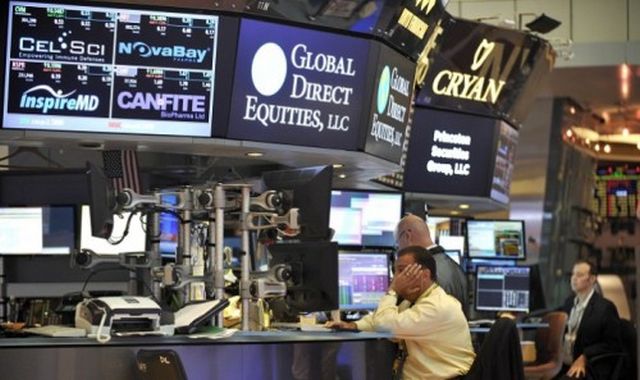
by admin | May 25, 2021 | Economy, Markets, News
 By Rohit Vaid,
By Rohit Vaid,
Mumbai : The upcoming macro-economic data points on industrial production and inflation, along with the escalation in US-China trade war, are expected to determine the trajectory of key Indian equity indices next week.
According to market observers, factors such as global crude oil prices, combined with the rupee’s movement against the US dollar and the direction of foreign fund flows, will also impact investors’ risk-taking appetite.
Investors are expected to closely follow the macro-economic data points such as the IIP (Index of Industrial Production) and Balance of Trade figures.
The Central Statistics Office (CSO) is slated to release the macro-economic data points of IIP and CPI (consumer price index) on September 12, Wednesday.
“Next week is loaded with macro-data releases such as IIP, CPI, WPI (Wholesale Price Index) and, more importantly, the trade deficit for August. The CPI release would influence the next RBI (Reserve Bank of India) moves in the month of October,” Devendra Nevgi, Delta Global Partners Founder and Principal Partner, told IANS.
Besides macro-data, escalation in global trade protectionist measures, as well as high crude oil prices are expected to exert pressure on the Indian rupee in the coming week. Any further depreciation in the rupee’s value is expected to have a negative impact on the domestic indices.
Anindya Banerjee, Deputy Vice President for Currency and Interest Rates with Kotak Securities, said the Indian rupee is expected to remain under pressure as the US dollar could rise after US jobs data “surprised positively”.
“At the same time, US President has hinted at fresh set of tariffs on China. Both these news items can drive rupee lower. We expect a range of 71.60-72.60 on spot,” Banerjee told IANS.
The Indian rupee breached the 72 per US dollar-mark for the first time during the week ended on Friday.
The rupee ended the week at 71.73 to a USD — 73 paise weaker from its previous corresponding close of 71 per greenback.
“The currency has depreciated by 13 per cent YTD, while the 10-year yield has breached the eight per cent-mark during the week. Given these factors and the widening fiscal deficit, RBI is likely to consider a hike in interest rate in the near future,” said Vinod Nair, Head of Research at Geojit Financial Services.
“Additionally, investors will be keen on the upcoming CPI inflation and US unemployment data to get some cues on market direction.”
In terms of investments, provisional figures from the stock exchanges revealed that foreign institutional investors sold scrips worth Rs 789.60 crore and the domestic institutional investors bought stocks worth Rs 1,167.85 crore in the past week.
Technical charts showed that National Stock Exchange (NSE) Nifty50’s intermediate trend remains bullish.
“Technically, while the Nifty has corrected this week, the intermediate trend of the Nifty remains up,” said Deepak Jasani, Head of Retail Research for HDFC Securities.
“The uptrend is likely to resume once the immediate resistance of 11,760 points is taken out. Crucial supports to watch on the downside are at 11,393-11,340 points.”
Last week, depreciation in the rupee’s value and high crude oil prices dragged the Indian equity market lower.
Accordingly, the S&P Bombay Stock Exchange (BSE) Sensex closed at 38,389.82 points, lower 255.25 points or 0.66 per cent from its previous close.
Similarly, the wider NSE Nifty50 closed lower. It ended at 11,589.10 points, down 91.4 points or 0.78 per cent from the previous week’s close.
(Rohit Vaid can be contacted at rohit.v@ians.in)
—IANS

by admin | May 25, 2021 | Economy, Markets, News
 By Rituraj Baruah,
By Rituraj Baruah,
Mumbai : The Indian equity market rose for the fifth consecutive week and scaled new highs during the August 20-24 period amid concerns of global trade war escalation.
Healthy buying in pharma and metal stocks, among others, supported the gains on the indices, analysts said.
On Thursday, both key indices — S&P BSE Sensex and the NSE Nifty50 — touched their respective intra-day all-time high levels of 38,487.63 points and 11,620.70 points, before settling at their record closing levels of 38,336.76 points and 11,582.75 points, respectively.
Both major indices are currently hovering around record levels and any minor gain in trade makes the indices touch fresh benchmarks.
A positive outlook for the Indian economy by the global credit ratings and research firm Moody’s Investors Service also supported sentiments.
However, in the later part of the week, concerns of rise in the US-China trade conflict made the traders cautious and limited the gains, analysts said.
On a weekly basis, the S&P BSE Sensex closed at 38,251.80 points, higher 303.92 points or 0.80 per cent from its previous close.
Similarly, the wider Nifty50 on the National Stock Exchange made gains. On Friday, it ended at 11,557.10 points, higher 86.35 points or 0.75 per cent from the previous week’s close.
“Benchmark indices once again hit fresh life-time highs and settled the week with a decent gain despite escalating trade war tensions and firmness in crude oil prices,” said Rahul Sharma, Senior Research Analyst, Equity99.
Sharma said sentiments were boosted after Moody’s report said that the Indian economy is expected to grow by around 7.5 per cent in 2018 and 2019, supported by strong urban and rural demand and improved industrial activity.
Hem Securities’ Director Prateek Jain said: “Towards the fag end of the week, market reflected correction due to Indian currency’s depreciation.”
“Meanwhile, US-China discussions did not reach any conclusion. China and the US both imposed tariffs of $16 billion on each other’s products,” Jain added. This resurgence in trade tensions further limited the gains in the Indian indices.
The rupee depreciated significantly on Thursday and closed at over the psychological mark of 70 per dollar — at 70.12 per dollar — which dampened the domestic sentiments.
According to Kotak Mutual Fund’s Head of Equity Research, Shibani Kurian, rise in trade deficit along with trends of a strong US dollar and the over-valuation of the Indian rupee in real effective exchange rate basis exerted pressure on the domestic currency.
However, it recovered on Friday and on a weekly basis the Indian currency settled 69.91 per dollar, appreciating by 25 paise from its previous week’s close of 70.16 per greenback.
In terms of investments, provisional figures from the stock exchanges showed that foreign institutional investors bought scrips worth Rs 128.64 crore and the domestic institutional investors purchased stocks worth Rs 1,837.84 crore in the past week.
Figures from the National Securities Depository Ltd (NSDL) showed that foreign portfolio investors (FPIs) divested Rs 468.41 crore, or $66.24 million, from the equities segment during August 20-24.
Sector-wise, the top gainers were energy, pharma, infra and metal indices and the top losers were Bank Nifty, realty and public sector banks, said Deepak Jasani, Head of Retail Research, HDFC Securities.
The top weekly Sensex gainers were Larsen and Toubro (up 8.91 per cent at Rs 1,342.80), Vedanta (up 7.38 per cent at Rs 223.95), ONGC (up 6.58 per cent at Rs 174.90), Reliance Industries (up 6.49 per cent at Rs 1,278.05) and Wipro (up 4.45 per cent at Rs 292.30 per share).
The major losers were Infosys (down 3.18 per cent at Rs 1,379.95), Indusind Bank (down 2.82 per cent at Rs 1,927.25), Hero MotoCorp (down 2.24 per cent at Rs 3,212.60), ICICI Bank (down 1.30 per cent at Rs 330.10) and Yes Bank (down 1.07 per cent at Rs 374.65 per share).
(Rituraj Baruah can be contacted at rituraj.b@ians.in)
—IANS

by admin | May 25, 2021 | World
 By Adem Salvarcioglu,
By Adem Salvarcioglu,
Ankara: China on Saturday warned state-owned media against highlighting the ongoing “trade war” with the U.S.
According to a story in Hong Kong-based newspaper South Morning Post, the Chinese government asked its media not to relate decline in the stock market and the depreciation of the Chinese Yuan to the trade war.
The government even advised against using the term “trade war” in stories, according to the story which quoted four employees.
The decision reportedly was taken to avoid panic in the public.
*Dilan Pamuk contributed to this story in Ankara
—AA

by admin | May 25, 2021 | Business, Emerging Businesses, Medium Enterprise, World
 By Gaurav Sharma,
By Gaurav Sharma,
Beijing : A trade war between China and the US – the world’s largest economies – began on Friday as the two sides started slapping additional tariffs on each other’s goods, worth nearly $70 billion, a development that could impede global economic recovery.
As planned, Washington began taxing 818 Chinese goods worth $34 billion early on Friday to punish Beijing for allegedly playing underhand in trade practices and pressuring US companies to hand over their technologies for doing business in China.
Beijing, which denies these charges, was swift in responding in kind after the first tranche of planned US levies on Chinese goods announced by President Donald Trump kicked in on Friday.
“After the US imposed its tariffs, China also took effective measures,” said Chinese Foreign Ministry spokesperson Lu Kang.
Even though neither Lu nor the Chinese Commerce ministry gave details about the scales of tariffs, Beijing has plans to slap punishing levies 545 US products worth $34 billion a year that range from soybeans and lobsters to sport utility vehicles and whiskey.
The duties slapped by the US will make Chinese cough an additional 25 percent on products such as industrial machinery, medical devices and auto parts.
Reacting to the tariffs, the Chinese Commerce Ministry said: “The US has ignited the largest trade war in economic history.
“The Chinese side, having vowed not to fire the first shot, is forced to stage counter-attacks to protect the core national interests and interests of its people.”
The Chinese Foreign Ministry said the US had blatantly violated the WTO rules.
“It will surely impact the global trade order, trigger global market fluctuation and impede economic recovery.” spokesperson Lu Kang said.
“More multinational companies, SMEs and ordinary consumers will be impaired and many industries in the US have realised that it is them that will bear the consequences.”
On Thursday, Trump showed no signs of backing down from his fight and suggested the possibility of tariffs on almost $500 billion more of Chinese goods.
“Thirty-four, and then you have another 16 in two weeks and then, as you know, we have 200 billion in abeyance and then after the 200 billion, we have 300 billion in abeyance. OK?” Trump told reporters aboard the Air Force One.
“So we have 50 plus 200 plus almost 300.”
Following Friday’s development, the Shanghai Composite index fell 1.1 percent, after reaching more than a two-year low this week, reports the Guardian.
Trump and his advisers argue the tariffs are necessary to pressure China into abandoning unfair practices such as stealing intellectual property and forcing American companies to hand over valuable technology, reports CNN.
In addition to the tariffs, the White House is placing restrictions on investment and on visas for Chinese nationals.
The clash with China comes as the Trump administration is also fighting over trade with American allies such as Canada and the European Union.
American tariffs on steel and aluminum imports have provoked retaliatory measures against billions of dollars of American exports.
—IANS

by admin | May 25, 2021 | Economy, Markets, News, Opinions
 By Amit Kapoor,
By Amit Kapoor,
The much-dreaded trade war has come dangerously close to fruition after the tit-for-tat exchanges between the United States and China over the course of the past week.
Last Tuesday, the US, blaming China for intellectual property theft, released a list of 1,300 products that could possibly be imposed with a tariff of 25 percent — worth a total of $50 billion — unless China mends it ways. The very next day China came up with a list of US imports that could be charged with a 25 percent tariff, again worth approximately $50 billion.
Trump retaliated the following day saying that the US government is considering imposition of tariffs on another $100 billion of Chinese imports. In response, China warned on Friday that it was ready with a “fierce counter-strike” of fresh trade measures if Trump follows through on his threat and that it would fight the US “at any cost”.
At the time of writing (April 9), neither of the two nations had followed through on their threats and, hopefully, a more conciliatory tone will be adopted this week. What needs to happen is quite straightforward. China should recognise that some of the US claims have merit. Beijing has long demanded that US businesses relinquish their intellectual property rights if they want to gain access to Chinese markets. For instance, if a US car manufacturer wants to sell cars in China, it has to team up with a local manufacturer and transfer all the technology or face steep import tariffs. China has been benefiting from this rule for decades. In case China ends this, Trump could withdraw his threats of tariffs and both sides would be in a position to disengage.
It is also more in China’s interests to avoid a full-blown trade war. The country is still an export-dependent economy and it sells more goods to the US than it buys. But China, with its ambitions of being the next superpower, might not back down so easily. It would prefer not to be seen as yet another developing economy with no option but to do as Washington dictates. It also has some damning arsenal in its kitty to pose a credible threat to the US: A massive reserve of US Treasury bills. If it plans to dump these bonds on the world markets, it would mean catastrophe.
Therefore, it is in everyone’s best interests that sense prevails, and a trade war is avoided at all costs.
A positive outcome from this affair has been the resilience shown by the emerging economies around the world. If history is any indication, a situation like a tit-for-tat trade war between two of the world’s largest economies should have sent capital rushing towards safe assets in the US, leaving the emerging economies high and dry. That was the case until quite recently. A case in point is the “taper tantrum” of the US Federal Reserve which took place in 2013 and a similar flight of capital destabilised the developing world economies.
Morgan Stanley famously coined the phrase “fragile five” to describe the precarious situation in which Brazil, India, Indonesia, South Africa and Turkey found themselves. Now, the emerging economies are seeming more like safe havens. Since the turmoil of 2013, these nations have worked towards strengthening their balance sheets and making themselves resilient to global shocks.
As a result, considerable confidence is being shown towards the assets of these countries. Emerging Portfolio Fund Research data shows that in the first quarter of this year $43 billion has flown into equity funds of emerging markets. These inflows already account for two-thirds of their value in the whole of last year. In contrast, equity funds in the developed markets have attracted merely $25.5 billion in the first quarter of this year and the flows have also been more volatile than in emerging economies. The emerging market currencies have also been up four per cent against the dollar this year. These trends go on to show the strength of the emerging markets in sharp contrast to the dire situation just a few years ago.
Even if a trade war does break out and the global scenario does not remain as promising, India might emerge relatively unscathed. In the unlikely scenario where the carefully established rules-based trade system is forsaken, relationships will define trading patterns. Prime Minister Narendra Modi has spent the last four years building strong connections with countries around the world. These efforts would pay much-needed dividends to the Indian economy if a trade war ensues.
Whatever be the case, it is quite clear that the liberal world order established in the post-war era is going through dynamic changes. The developed world is uneasy about ceding its long-held power to the emerging economies. India still has a long way to go, but China is rapidly catching up in terms of technological competence. It is time to reset the rules of the global trading regime and ensure a fair and level playing field among countries with fundamentally disparate economic systems.
(Amit Kapoor is chair, Institute for Competitiveness. The views expressed are personal. He can be contacted at amit.kapoor@competitiveness.in and tweets @kautiliya. Chirag Yadav, senior researcher, Institute for Competitiveness, has contributed to the article)
—IANS






